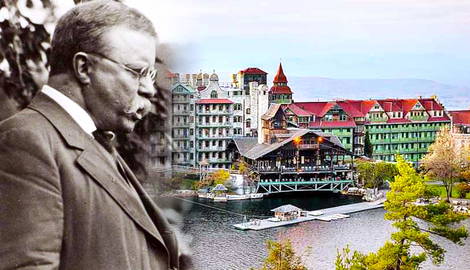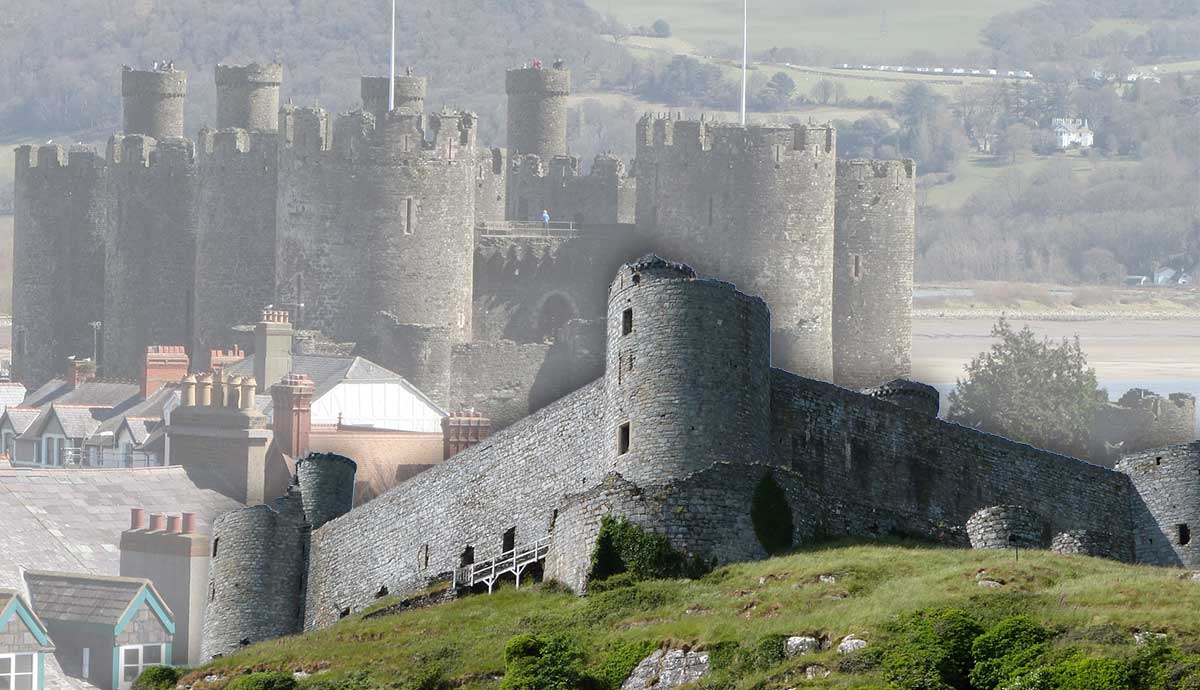
If you’re a history buff who also appreciates beautiful scenery, then New York State’s old towns must be next on your bucket list. Here, you will appreciate stunning views of rolling hills, color-changing mountains by the season, and charming blue lakes. But above all else, you will also have the chance to witness well-preserved historic downtowns across the Empire State with iconic landmarks that bring to life much of America’s cherished history. Together, we will go on a journey to New York’s most beautiful historic towns, famous for their culture and charm.
1. Seneca Falls

This town is located on the Seneca River in the Finger Lakes region. What’s famous about Seneca Falls is its Victorian architecture which you can witness in its historic downtown. This is on top of the charming water views offered there.
Seneca Falls is known for becoming a hub for America’s women’s rights after it was first settled in 1787. This town was home to key figures in the movement, from Elizabeth Cady Stanton to Amelia Jenks Bloomer. Seneca Falls is also where the 1848 Seneca Falls Convention for Women’s Rights took place.
At present time, it boasts the Elizabeth Cady Stanton House as well as the National Women’s Hall of Fame. Too many people believe, including actress Karolyn Grimes, that Seneca Falls has inspired the fictional Bedford Falls in It’s a Wonderful Life. This is because of the similarities between the town’s architecture, steel bridge, and its community and those of the setting of the film.
Today, Seneca Falls hosts an annual It’s a Wonderful Life festival in celebration of this interesting connection.
2. Southold

In 1640, 13 families founded Southold. They were from the colony of New Haven. The New York town was the first ever English settlement in the state. Southold is surrounded by water on three sides and covers 60 square miles of land. It is also known mostly for its agricultural activity.
The Horton Point Lighthouse should be on your bucket list in Southold. This is one of eight historic lighthouses in town, and it’s listed on the State and National Registers of Historic Places. The U.S. Lighthouse Service built Horton Point Lighthouse in 1857. It stands at 58 feet tall. The lighthouse was restored, relit, and reopened in 1990.
3. Skaneateles

Pronounced “Skinny-atlas,” this Central New York town sits on the Skaneateles Lake. This is one of the clearest lakes in the Finger Lakes region that was formed millions of years ago by glaciers. It was named after the Iroquois word for “Long Lake.”
Skaneateles is also surrounded by stunning hills and boasts a historic downtown with Victorian homes as well as brick storefronts. The town has a rich Revolutionary War history. Land grants were given to soldiers there after the war. This allowed Skaneateles to grow exponentially.
As an old-world lover, make sure to visit the iconic historical landmarks in town. This includes the John D. Barrow Art Gallery and the historic Sherwood Inn. The latter was established in 1807. It’s also worth noting that Skaneateles was famous for boat craftsmanship, particularly between the years 1876 and 1945. The town was a leader in producing sailboats, motor launches, and canoes.
4. Cold Spring

This once-small trading post was founded in 1730 by Thomas Davenport. Here, you can witness well-preserved 19th-century buildings along the Hudson River. During the Civil War, Cold Spring used to supply munitions to the Union Army, which allowed it to turn into an industrial hub. Historical landmarks you should see in Cold Spring include the Constitution Island, West Point Foundry Preserve, West Point Military Academy, and Boscobel House and Gardens.
This beautiful small town in New York was also popular with writers and artists throughout history. For example, Don McLean lived in Cold Spring when he wrote American Pie.
The Historic District of Cold Spring has more than 200 buildings listed on the National Register of Historic Places. Do not forget to witness the beautiful churches in town, such as Saint Mary’s in the Highlands and Our Lady of Loretto. It’s also worth visiting the Magazzino Italian Art museum.
5. New Paltz

New Paltz combines both history with stunning natural beauty. The town is located beneath the Shawangunk Ridge and beside the Wallkill River in Ulster County. In the early 18th century, it was settled by the French Huguenots. The National Historic Landmark District, Historic Huguenot Street, is where you can witness a reconstructed 1717 church on top of seven original stone houses and learn about the colonial past of New Paltz. Historical landmarks you should see here include the 1717 Crispell Memorial French Church as well as the 1721 Jean Hasbrouck House.
Head to the western side of the town to see 70 miles of trails at the Mohonk Preserve, where you can enjoy horseback riding, biking, hiking, and many more fun activities. Also, do not forget the world-famous Mohonk Mountain House at Minnewaska State Park Preserve. This Victorian-era resort is located on the edge of Mohonk Lake and offers 40,000 acres of enchanting landscapes, luxury accommodations, and a unique spa.
6. Huntington

Home to various historic sites managed by the Huntington Historical Society, this town was founded in 1653. It’s famous for its well-preserved colonial architecture. Huntington is located on the northern shore of Long Island.
Among the historic places you must not miss in this town are the Soldiers and Sailors Memorial Building and the Kissam House Museum. Both these will give you a glimpse of the town’s role in the Revolutionary War.
If you fancy some good live music or an artistic performance, head to the Paramount Theater, located in a restored historic venue. As for art lovers, the Heckscher Museum is a must. Here, you can see a wide collection of European and American art.
7. Lewiston

Lewiston is located at around a 30-minute drive out of Buffalo. It’s home to just 16,000 residents and was formed in 1818. This small town covers 64 square miles of land along the Niagara River. At Center Street, you can see historic buildings that are more than 200 years old. Do not miss the Frontier House there, built in 1824. This historic hotel made it to the National Register of Historic Places in 1974.
Lewiston played a big role as one of the final stops along the Underground Railroad. Several people had to break the law in Lewiston to save fugitive slaves make their way to Canada safely. When visiting this small New York town, witness the Freedom Crossing Monument, located along the Niagara River banks on North Water Street. The plaque next to the iconic monument will reveal to you the history of the role Lewiston played in the Underground Railroad.
Other historic monuments you need to see when visiting Lewiston include the Tuscarora Heroes Monument located along Portage Road and the Robert Moses Niagara Power Plant.
8. Lake George

Founded in 1810, this beautiful town is located in the Adirondacks. It was known back then as the “Town of Caldwell.” It wasn’t until 1962 that it was renamed to its actual name, Lake George.
The town is home to a historic retreat center dating back to 1903. Wiawaka was established for female textile workers from Troy. Today, the center operates for everyone as a nonprofit.
National Historic Landmarks in Lake George include the Owl’s Nest as well as the Land Tortoise (radeau) Shipwreck Site.
Some landmarks in Lake George that you should visit include the Wiawaka Bateaux Site, Royal C. Peabody Estate, and Wiawaka Holiday House. These are listed on the National Register of Historic Places.
Head to Fort William Henry Museum to learn about the military history of this former British outpost. The museum is open between May and October, and we recommend you try the tours available.
Also when in Lake George, drive along Prospect Mountain Veterans Memorial Highway up to the summit of three overlooks that’ll offer you breathtaking views. Note that this highway is open only between May and November.
9. Oyster Bay

Oyster Bay was first mentioned by Dutch Captain David Pietersz. de Vries in his journal in 1639, after he was enchanted by the town’s beautiful harbor. During the same year, this Long Island hamlet was purchased by the Dutch from Native Americans. After that, it came under British rule. In 1667, Oyster Bay got its charter to become a township.
The town became home to President Theodore Roosevelt during the summer of 1885 and up to 1919, the year he was deceased. His home was located on Sagamore Hill, and it now belongs to the National Park Service. Needless to say, you have to visit the place which is open to the public today, and is known as Sagamore Hill National Historic Site.
For lovers of art, we recommend you head to Planting Fields Arboretum State Historic Park for some horticultural showings. The park is located on a Gold Coast estate dating back to the early 20th century.
Also, do not forget about the Raynham Hall Museum, where you can learn a lot about the region’s history during the American Revolutionary War.
10. Cooperstown

19th century architecture and waterfront views await in this Central New York small village. More than 300,000 people flock every year to Cooperstown to visit the historic National Baseball Hall of Fame museum.
William Cooper founded Cooperstown in 1786. He was the father of James Fenimore Cooper, a famous American novelist. A historic Revolutionary War battle took place in this town where Generals James Clifton and George Washington defeated the British with the help of the Iroquois.
Listed on the National Register of Historic Places in 1980, the Cooperstown Historic District is home to 232 contributing properties.
When you’re in Cooperstown, make sure to visit the Farmer’s Museum and the Fenimore Art Museum, two of the town’s most historical landmarks.
You can also tour Hyde Hall, a neoclassical country mansion with over 50 rooms and stunning architecture. Have a picnic on the lawn and marvel at the serene Otsego Lake during the afternoon for some chill time in Cooperstown.










